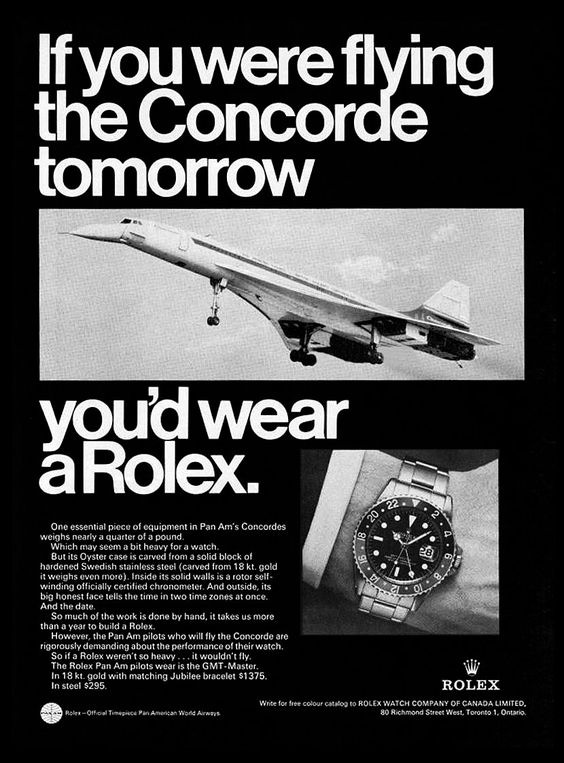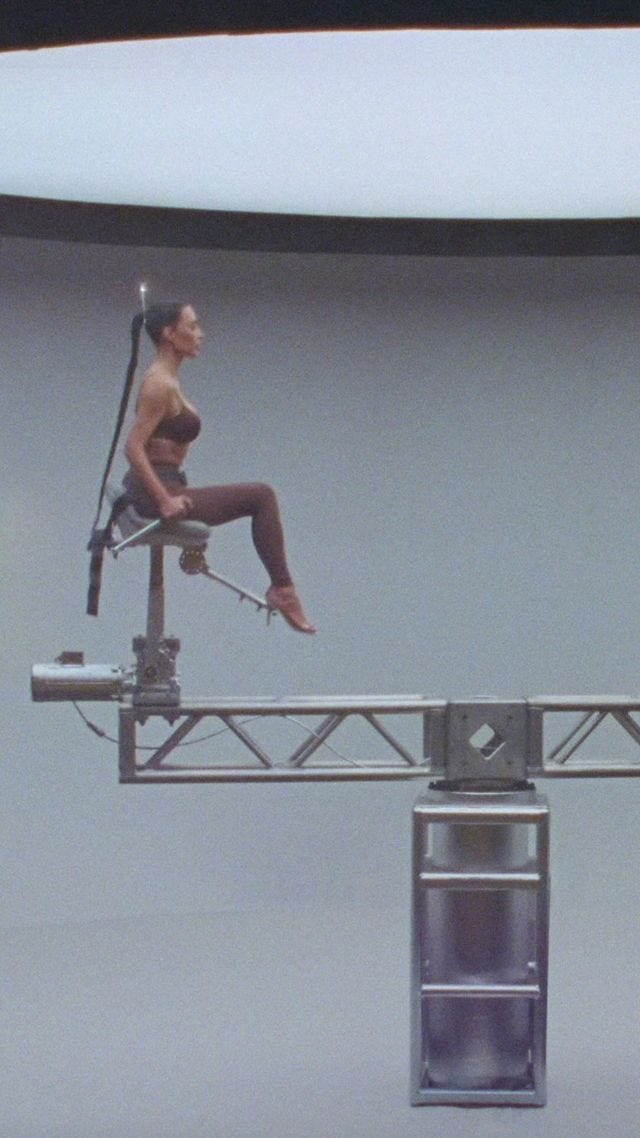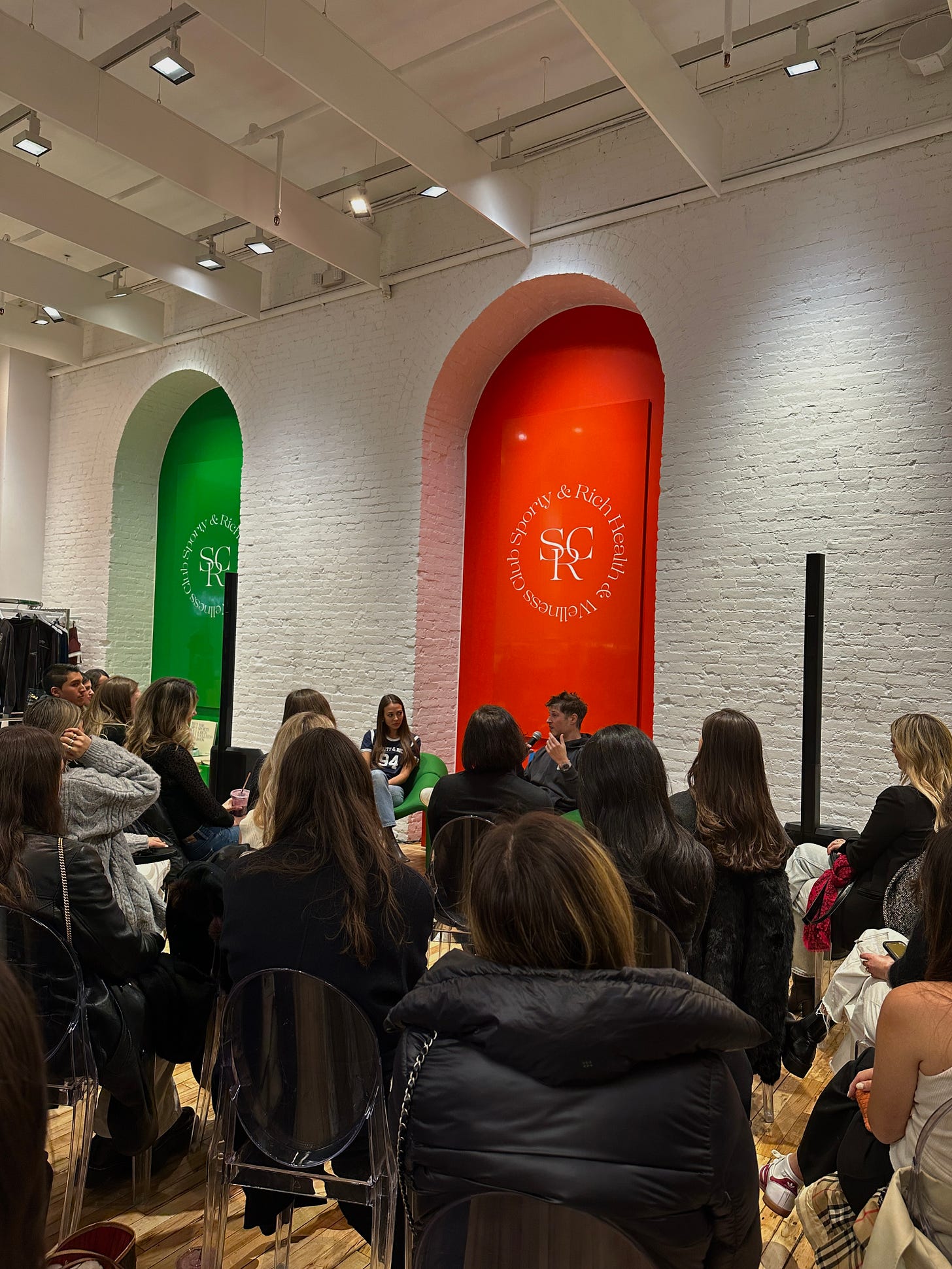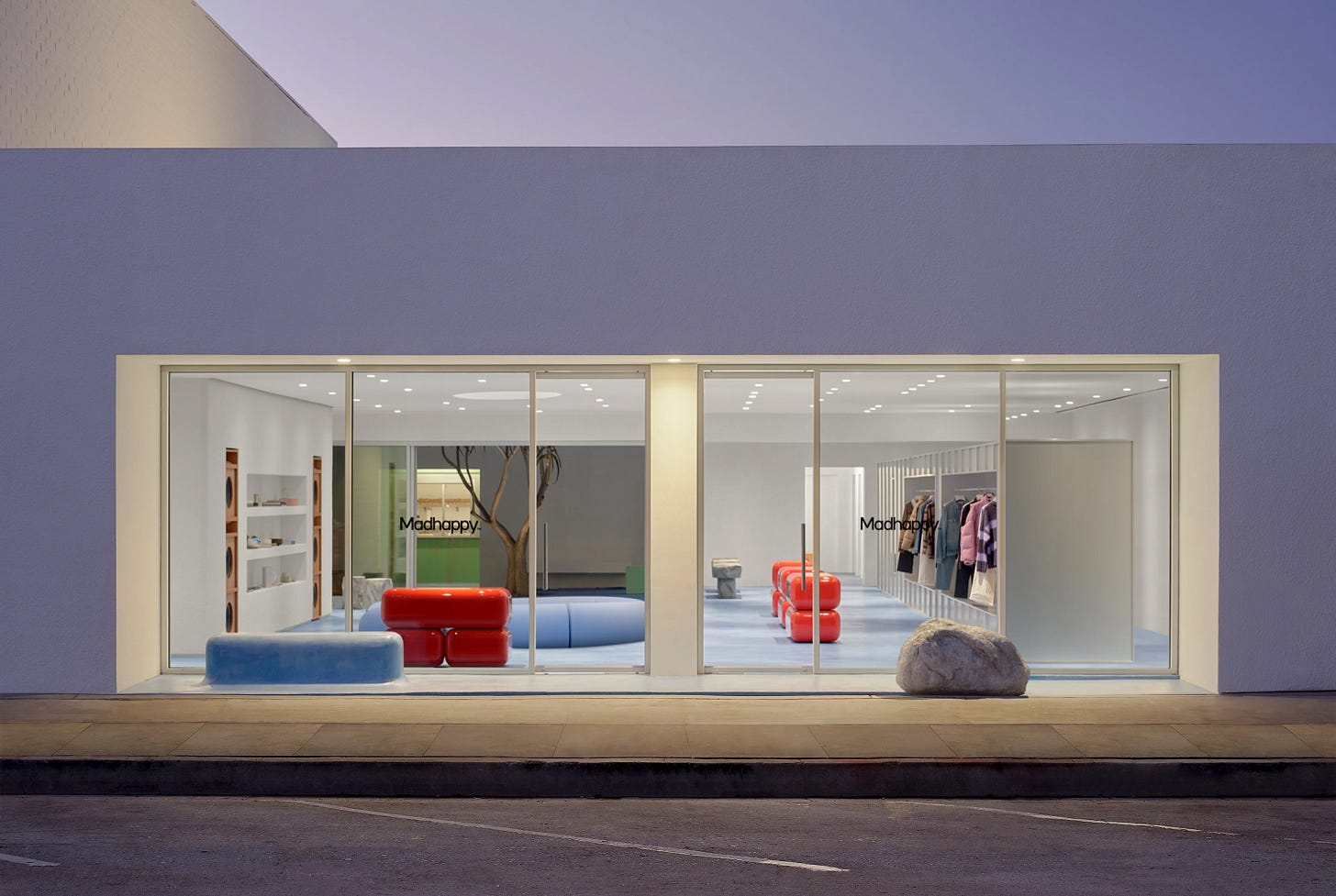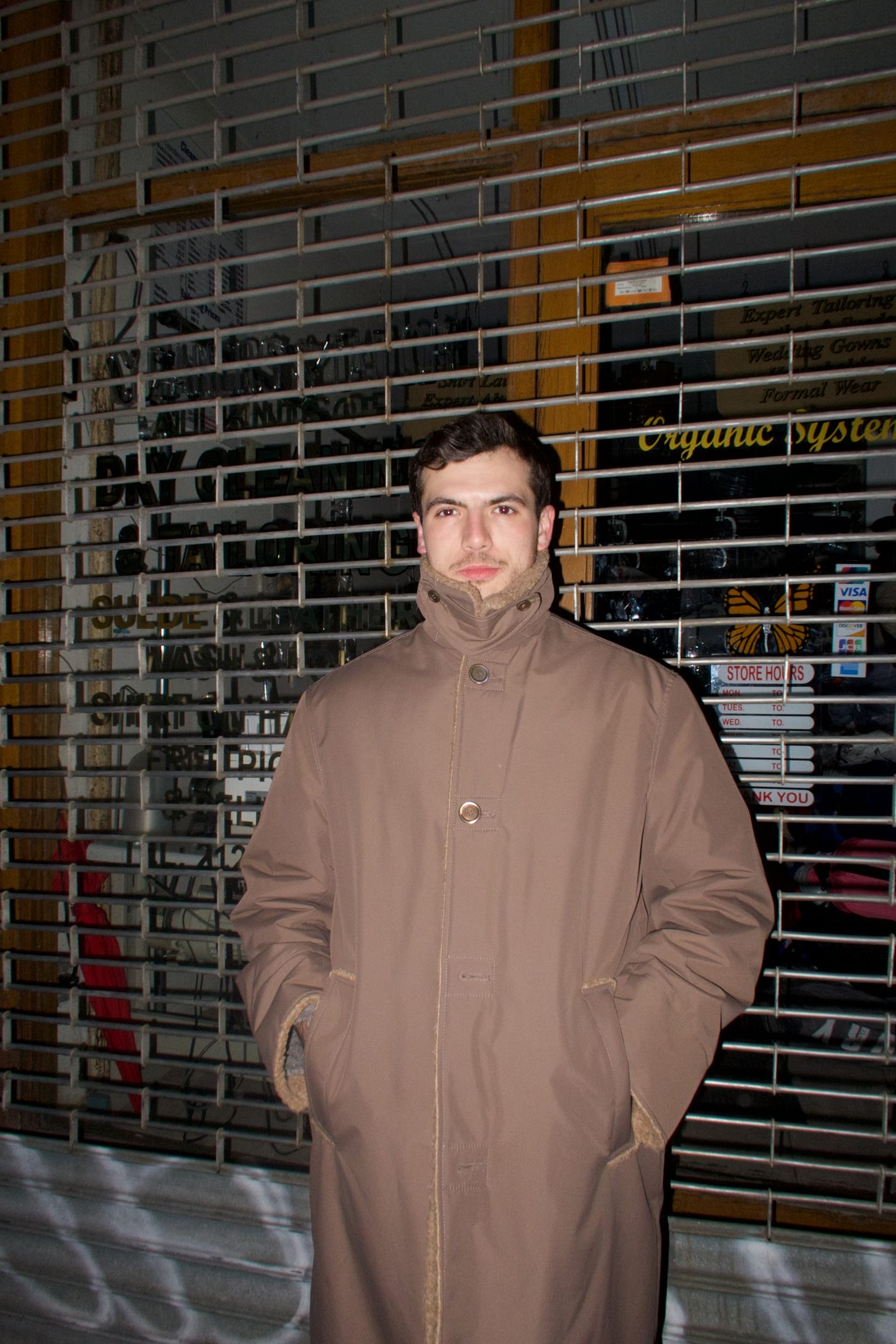The Sales Funnel Is Dead ☠️
How brands are appealing to Gen Z by dismantling the sales funnel
The sales funnel was invented by E St Elmo Lewis in 1989, and for over a century has guided how brands market to consumers and lead them to purchasing a product or service. Marketing heavyweights from David Ogilvy to Leo Burnett have all looked to this tried and true formula to help their clients boost sales. Here’s how the marketing funnel has classically worked:
The sales funnel formula prioritized reaching as many segments as possible with general adverts, and used myriad tactics to make them aware, intrigue them, pique their desires, and psychologically wire them to part with their hard-earned cash and make a purchase, whether it be for a more refreshing soda, a faster car, or a watch that signals our success to the world.
But as Gen Z consumers reach their peak consumption years, marketers are increasingly finding the sales funnel as we know it may be dead.
Vogue Business recently explored how Gen Z broke the sales funnel, the new consumption landscape, and how savvy brands are building loyalty and social clout with Gen Z: the most powerful consumer cohort on the planet.
Enter the Infinite Sales Loop
The old sales funnel made sense; it was a top down approach the assumed the a large swatch of consumers could be made aware of a brands existence, and a progressively fewer percentage of those consumers could be swayed to make their way down the sales funnel to the point of purchase.
But this model was built when marketing was broad and our culture was more homogenous. The advent of the internet and more recently tailored algorithms has broken the assumption that we all consume the same content.
Rather, social media algorithms learn from our previous consumption behavior, and are programmed to give us our own unique content experience, tailored to keep us watching as long possible. Now, our culture has been broken into a million pieces, shattered as we all exist in segmented echo chambers.
So how does this new media landscape change Gen Z’s consumer habits?
It flattens the traditional sales funnel into an infinite feedback loop broken into these 4 segments:
Inspiration
Gen Z consumes more content than previous cohorts at their respective age. 80% of respondents say they’re exposed to more brands and ads as a result of their media diet. Rather than tapping out of this overwhelming cycle, they are relying on social media algorithms to curate their viewing experiences and provide them with gold. That’s because Gen Z is more likely to consume content that inspires them.
Gen Z uses social media as a constant source of inspiration, 77% reporting they use social media to find style inspiration monthly. We are wired to take the stream of content in our social feeds and curate this to feed our need for fresh inspiration.
“Because Gen Zs came of age in an era where they’re constantly bombarded with content and information via social media, they consider inspiration and discovery foundational to their experience and even core to who they are,” - Ben Harms CGO of Archival
Luckily for new brands, 71% of respondents say they’re open to discovering new brands. But what channels are most likely to be seen by Gen Z? They most often learn about new brands, products, services, and experiences on these channels:
71% YouTube (yes, YouTube is still massive)
53% Tiktok
44% Instagram
29% Google
21% TV
Compared to millennials, Gen Z is far more dependent on social media than traditional TV to inform their consumer opinions. This change has led to influencers, celebs, and creators to become the new spokespeople for hot Gen Z brands. Think of Hailey Bieber advocating for Rhode, Kylie Jenner for her million products, and of course the queen: Kim K.
Exploration
Inspiring Gen Z is often not enough to compel them purchase, because they are actually discerning as f*ck. Growing up inundated with memes, internet conspiracies, and more has trained Gen Z to be hyper aware of scams. 56% believe brands often “lie about their products and services”
Young people are being impulsive, rather they are diving deeper into the algorithms to explore and either confirm or deny their intuition about a new brand. Gen Z looks to content creators to validate their purchasing decisions.
This leaves a massive opportunity for brands to utilize educational, valuable, and entertaining content to nurture their sales potential with Gen Z, by explaining the behind the scenes process of their brand and product offerings. Take for example, Minted NY, the creator led, NYC based running brand, spearheaded by Marcus Milione. Milione has documented the trials and tribulations of starting his fledgling brand, both entertaining the marketing the his target demo in the process.
Other brands rely on user generated content (UGC) to bolster the exploration library on their social channels. Brands like Djerf Avenue and The Frankie Shop often repost users content wearing and styling their products, which signals to skeptical consumers the brand can be trusted, because its authentically being supported by their peers.
Forgoing supporting content to help Gen Z explore your offerings can be marketing suicide. 46% of respondents say the inability to find independent information or reviews about your brand would dissuade them from making a purchase. If Gen Z can’t find your own content or others talking about your brand, they’ll think you’re a fraud.
Community
The secret is to make Gen Z feel like they’re part of a larger community. We no longer want to purchase in solitude, but purchase to become something larger than ourselves. 54% of Gen Z says their favorite brands are the one that make them feel like they’re part of a communuity. Brands that create a universe of holistic, relevant touch points will win Gen Z’s adoration.
Brands can take a few approaches to building community. One method is to create free events that invite new, potential consumers into the fold and expose them to the brand and its ethos. Take for example, the speaker series at Sporty & Rich’s SoHo flagship store, where founder Emily Oberg goes in conversation with health thought leaders like best-selling nutritionist Max Lugavere.
Another model is Vogue’s new subscription plan, which will invite new members to exclusive in-person events if they pay for a membership.
In a world where Gen Z is the most isolated generation (29% are prone to anxiety) the secret to driving their attention is building a world for them explore and a community for them to become a part of.
MadHappy, a streetwear brand with a focus on mental health messaging, has built a physical world at their West Hollywood flagship, dubbed the “Local Optimist Space”, as an extension of their brand, offering a rotating speaker and artist series.
“It’s a great example of the value we see in creating a world, rather than solely creating products,” Founder Peiman Raf says.
Aime Leon Dore has built a physical place for their customers to hangout and meet each other at Cafe Leon Dore, a coffee shop attached to their flagship on Mulberry St.
Brands that can’t afford a physical location or to sponsor an in-person event can also cultivate a sense of community online, by posting authentic content. Behind the scenes videos, product tutorials, and try-on styling videos work well to build a world of digital touchpoints for your brand.
Other brands have started newsletters with free email content relevant to the brands core demo, and even physical magazines.
At the end of the day, Gen Z wants to buy into a world they relate to and find value out of, not just the best product.
Loyalty
The last piece of the new sales loop is building loyalty. Previously, brands relied on discounts for repeat purchases and loyalty programs, those still matter, but Gen Z wants more reciprocity from their favorite brands.
Gen Z considers loyalty as showing a brand love on social media, or recommending the brand to their friends. 46% of teens consider themselves to be massive fans of a brand simply because they love it, even if they have no intent (or money) to purchase it. This shows that brands can begin to build a spot in the hearts and minds of younger demos before they can even consider making a purchase.
One of the most dynamic shifts in how Gen Z customers want a brand to express loyalty is the focus on social currency over actual currency. Gen Z is the creator generation, and when they post a video styling their new jacket from your brand, or using your new lip gloss, they want to be reposted on the brand account, recognized by the brand they love so much.
Thus, brands can tap into UGC to build loyalty and community, creating the idea that post-purchase, consumers can remain part of the brand’s story.
Brands like The Frankie Shop regularly celebrate customers purchases by reposting their UGC on their brand account, or leaving supportive comments. Social media is the currency here, people want to use a brands products to build their own brand, and feel included by being reposted into a brands universe, and find community with the brands customer base.
Can Your Brand Keep Up?
Breaking the sales funnel may seem scary to traditional marketers, but this dynamic new sales loop presents exciting opportunities for a new generation of brands to get savvy and find success.
There is no start or end point of the purchasing path today, meaning brands can shift their marketing efforts to fully envelop consumers into their world, building a true sense of loyalty and connection.
Brands are no longer the center of the consumer journey, you (yes you, reading this) are the center, and that means brands will do more and more to win over your attention, loyalty, and (most importantly) money.
Brands that get this right in 2024 will win with Gen Z consumers and reap the rewards.
About the Writer
Jake Bell is a content marketing and creative strategist based in NYC. He specializes in content creation, branding, art direction, creative strategy, and making things cool.
To learn more about Jake visit www.jb.studio
Have a tip email me jake@jb.studio
Like video? Check out his TikTok
Like fit pics and pictures of chairs? Visit his Instagram





